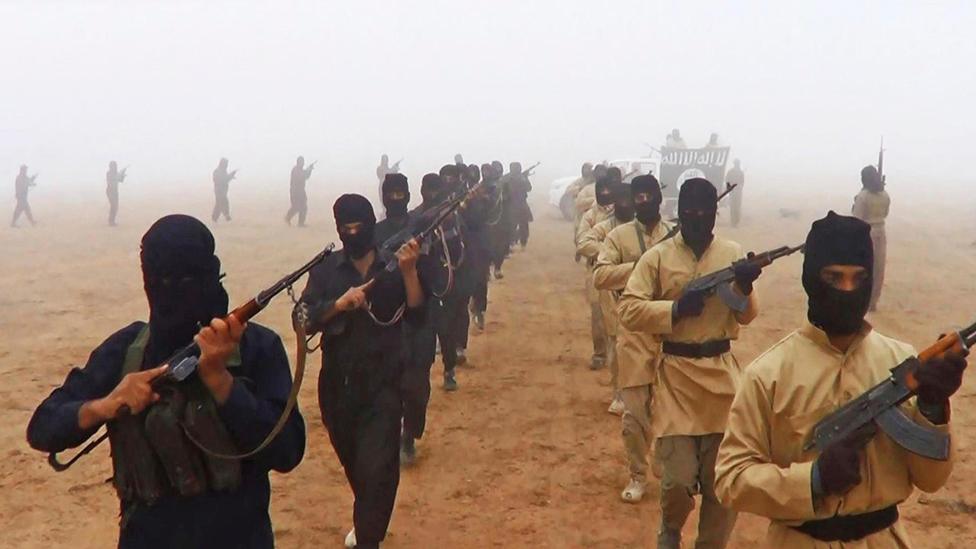Syria war: US bombs government forces after Deir al-Zour attack
- Published
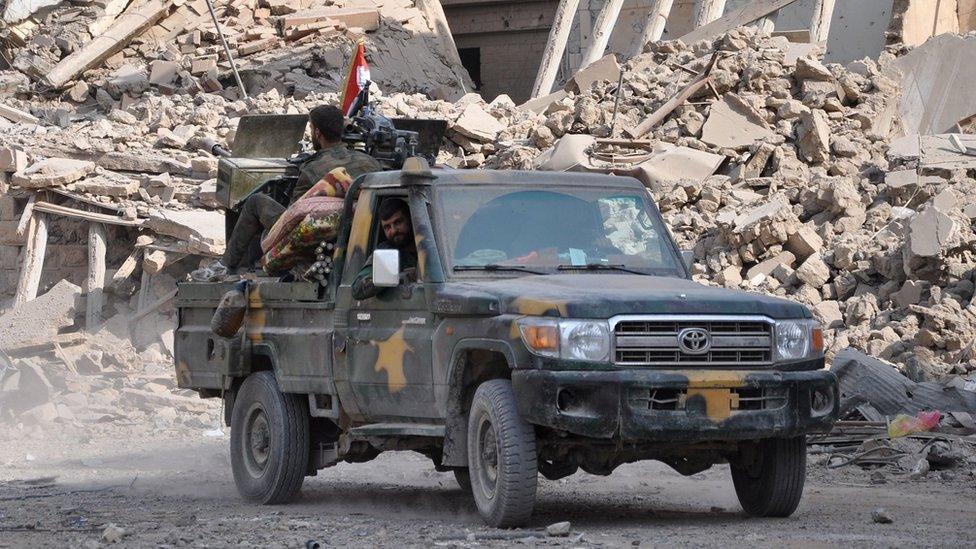
Pro-government forces control the city of Deir al-Zour and territory west of the River Euphrates
The US has carried out rare air strikes on Syrian pro-government forces after what it called an "unprovoked attack" on allied Kurdish and Arab fighters.
An estimated 100 pro-government fighters were killed in the overnight incident in Deir al-Zour province.
They had allegedly tried to take ground east of the River Euphrates, captured from the Islamic State group by the US-backed Syrian Democratic Forces (SDF).
State media said the US "aggression" left dozens of people dead or wounded.
The Middle Euphrates Valley serves as an informal demarcation line in eastern Syria, with the government controlling the western side and the SDF the east. The two sides have clashed there in the past year while seeking to drive IS militants from their last major stronghold in the country.
Elsewhere in Syria on Thursday, government warplanes bombed towns in the rebel-held Eastern Ghouta region near the capital Damascus for a fourth day.
The Syrian Observatory for Human Rights, a UK-based monitoring group, said at least 36 civilians were killed, bringing the death toll to 185 since Monday.
What happened in Deir al-Zour?
The US-led coalition against IS accused pro-government forces of initiating "an unprovoked attack against well-established SDF headquarters, external" late on Wednesday.
"Coalition service members in an advise, assist, and accompany capacity were co-located with SDF partners during the attack 8km east of the agreed-upon Euphrates river de-confliction line," a statement said.

"In defence of coalition and partner forces, the coalition conducted strikes against attacking forces to repel the act of aggression," it added, asserting its "non-negotiable right to act in self-defence".
Unnamed US military officials subsequently told reporters that about 500 pro-government fighters, backed by artillery, tanks, multiple-launch rocket systems and mortars, were involved in the assault.
One SDF fighter was reportedly wounded in the incident. There were no American casualties.
The Syrian Observatory for Human Rights confirmed there had been an attack on SDF positions near the town of Khusham, 10km (6 miles) south-east of Deir al-Zour city, and put the death toll at about 20.
Why did the pro-government forces attack?
"We suspect Syrian pro-regime forces were attempting to seize terrain SDF had liberated from [IS] in September 2017," one US official told Reuters news agency.
The forces were "likely seeking to seize oilfields in Khusham that had been a major source of revenue for [IS] from 2014 to 2017, the official added.
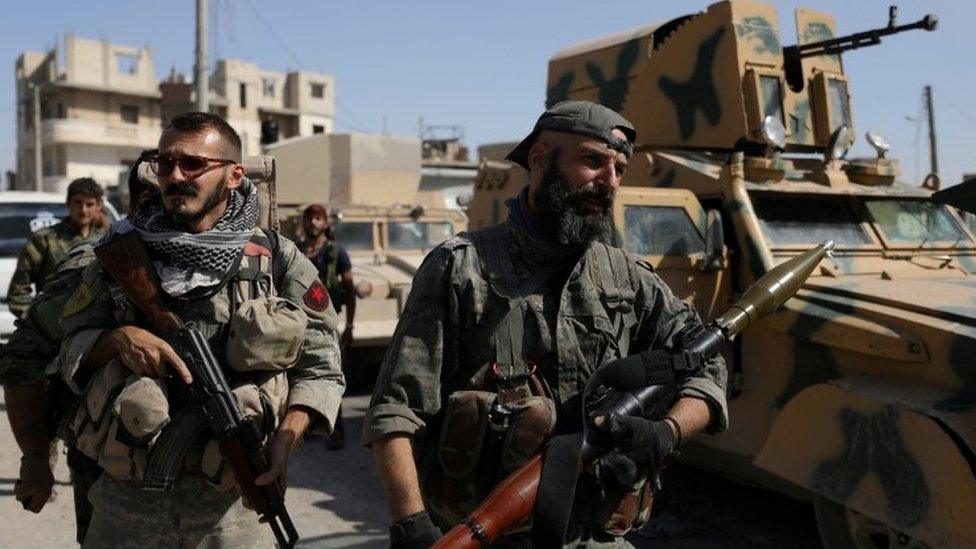
US-allied SDF fighters control territory east of the River Euphrates
Before the war, the Omar oil field was producing 30,000 barrels of oil per day, while the Conoco gas field was producing 13m cubic metres of gas per day.
The US-led coalition had observed a slow build-up of pro-government forces in the area over the past week and had alerted Russia, which backs the Syrian government, to the presence of SDF forces in the area, according to the official.
What does the Syrian government say?
There was no immediate response from officials in Damascus.
But Syrian state media reported that the US-led coalition had bombed "popular forces" fighting IS and SDF forces, external east of the River Euphrates, denouncing what they called a "new aggression" and "an attempt to support terrorism".
An Al-Ikhbariyah TV correspondent said the bombing left "dozens of dead and wounded" and identified the pro-government fighters as "local people".
The Syrian Observatory said they were local tribesmen loyal to President Bashar al-Assad and Afghan Shia militiamen.
The Russian defence ministry said the US strike wounded 25 pro-government volunteers, external, according to the Associated Press.
It noted that they had failed to co-ordinate their action with the Russian military, but said the incident "again showed that the US is maintaining its illegal presence in Syria not to fight the Islamic State group, but to seize and hold Syrian economic assets".
- Published24 January 2018
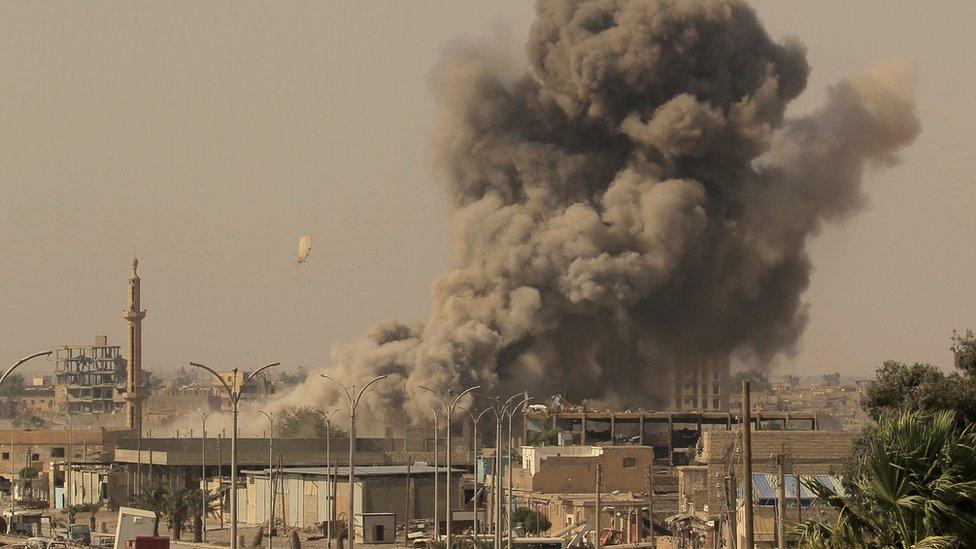
- Published22 January 2018
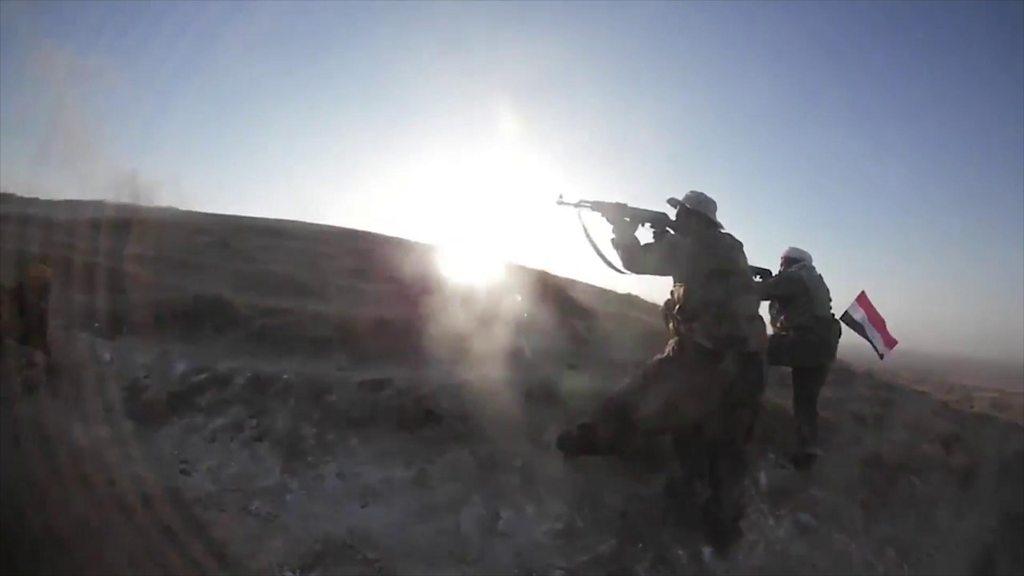
- Published30 October 2017
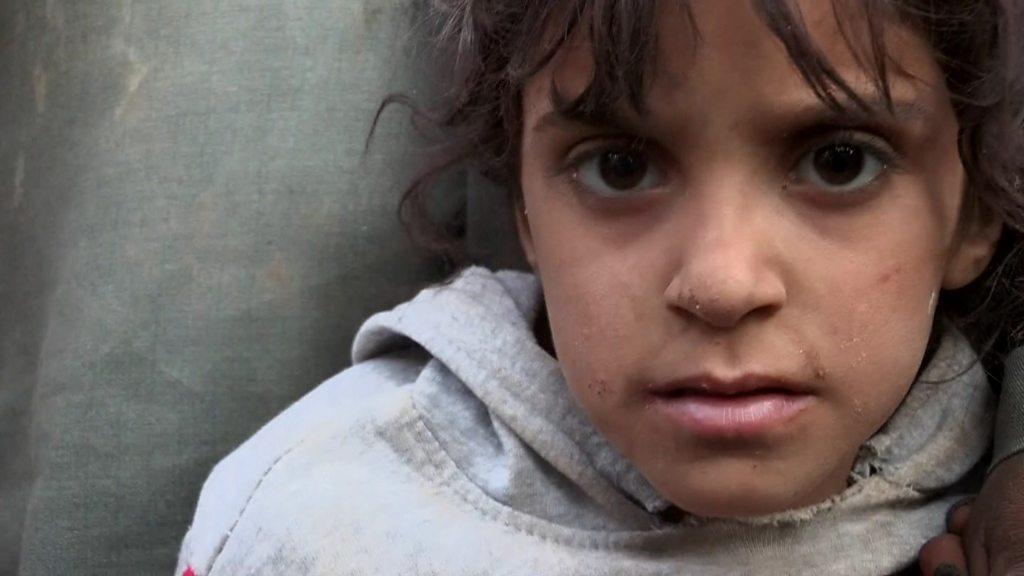
- Published2 November 2017

- Published17 October 2017
